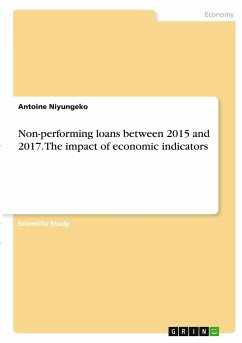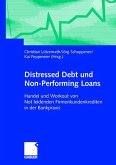Scientific Study from the year 2020 in the subject Business economics - Banking, Stock Exchanges, Insurance, Accounting, , language: English, abstract: This paper investigates the impact of economic indicators in their relationship to non-performing loans and the way the indicators change trough times using a cross-sectional analysis from the sample of 70, 69 and 63 world countries.Using the robust regression approach, economic indicators were analysed to find their impact on non-performing loans for the period from 2015 to 2017. The results show that the economic indicators negatively relate to non-performing loans are population growth rate (PG), current balance account (CBA), claims on private sector (CPS) and domestic credit to private sector (DCPS).Economic indicators have a positive impact on non-performing loans are gross domestic product growth (GDPG) and inflation. The findings also show that economic indicators affecting non-performing loans are changing. During the periods analysed, there is an increase in economic indicators affecting non-performing loans. They were only domestic credit to private sector, current balance account and claims on private sector in 2015. In 2016, another factor occurred in addition of those of 2015, inflation. In 2017, additional factors again occurred, population growth and gross domestic product growth.Banks should take recovery measures to reduce non-performing loans. A better assessment of the repayment capacity of the future customers coupled with a permanent follow-up of the customer during the whole credit cycle should be enhanced. Further investigations are needed to understand the interactions, and the relationships between non-performing loans, and the different types of borrowers, namely; individuals, small and medium enterprises, and corporate borrowers for a better customer selection because an increase in domestic credit to private sector reduces non-performing loans. Banks should develop a credit risk assessment model combining internal and customer factors.








